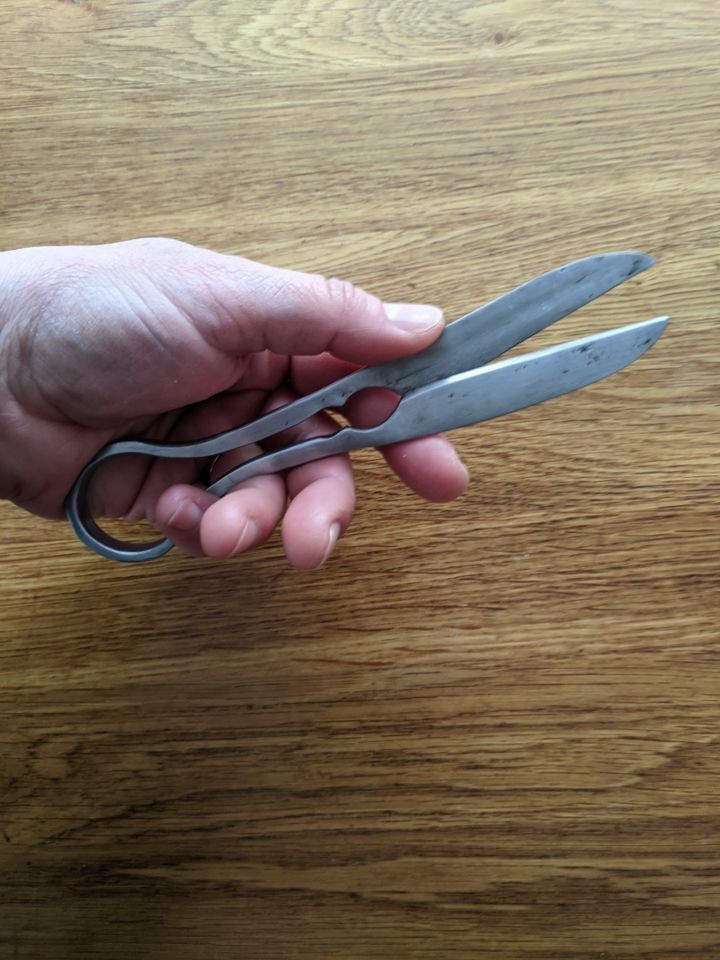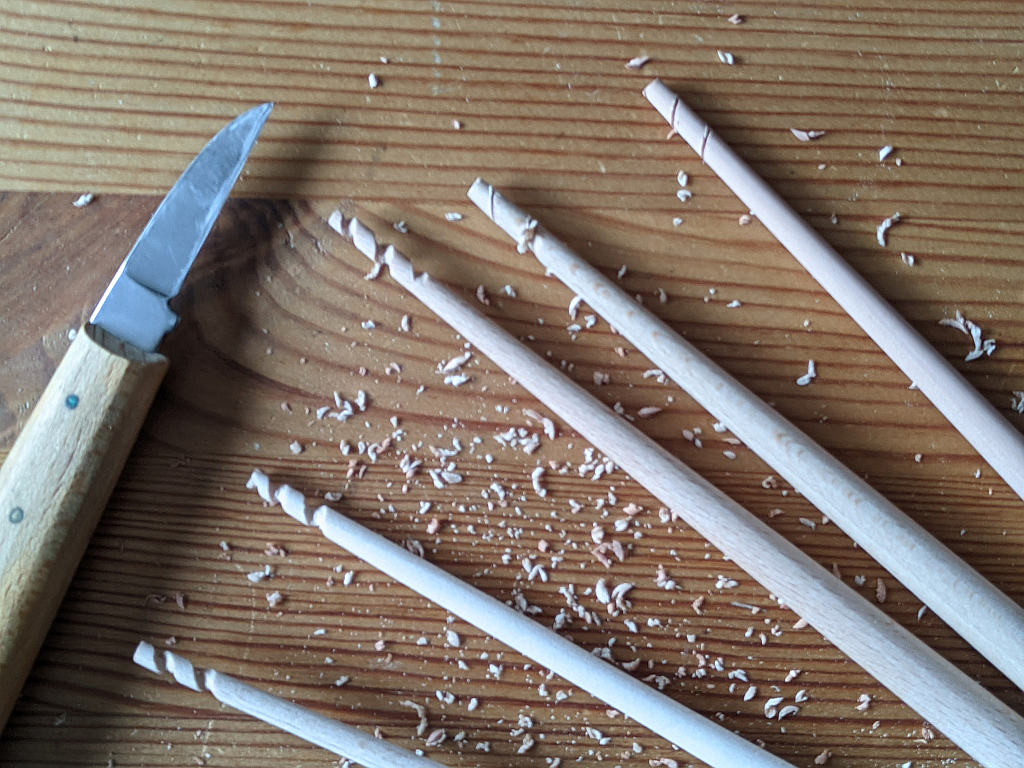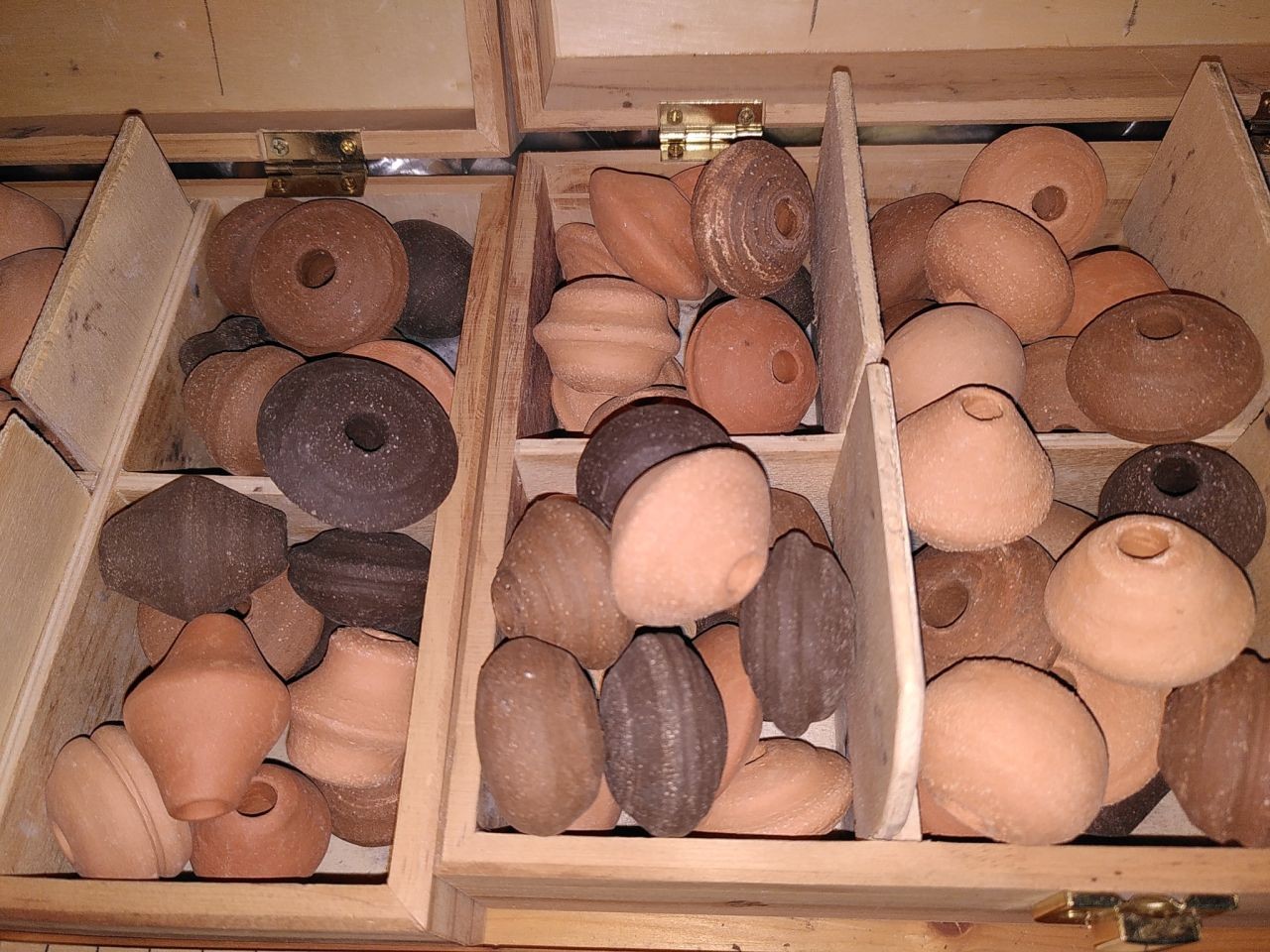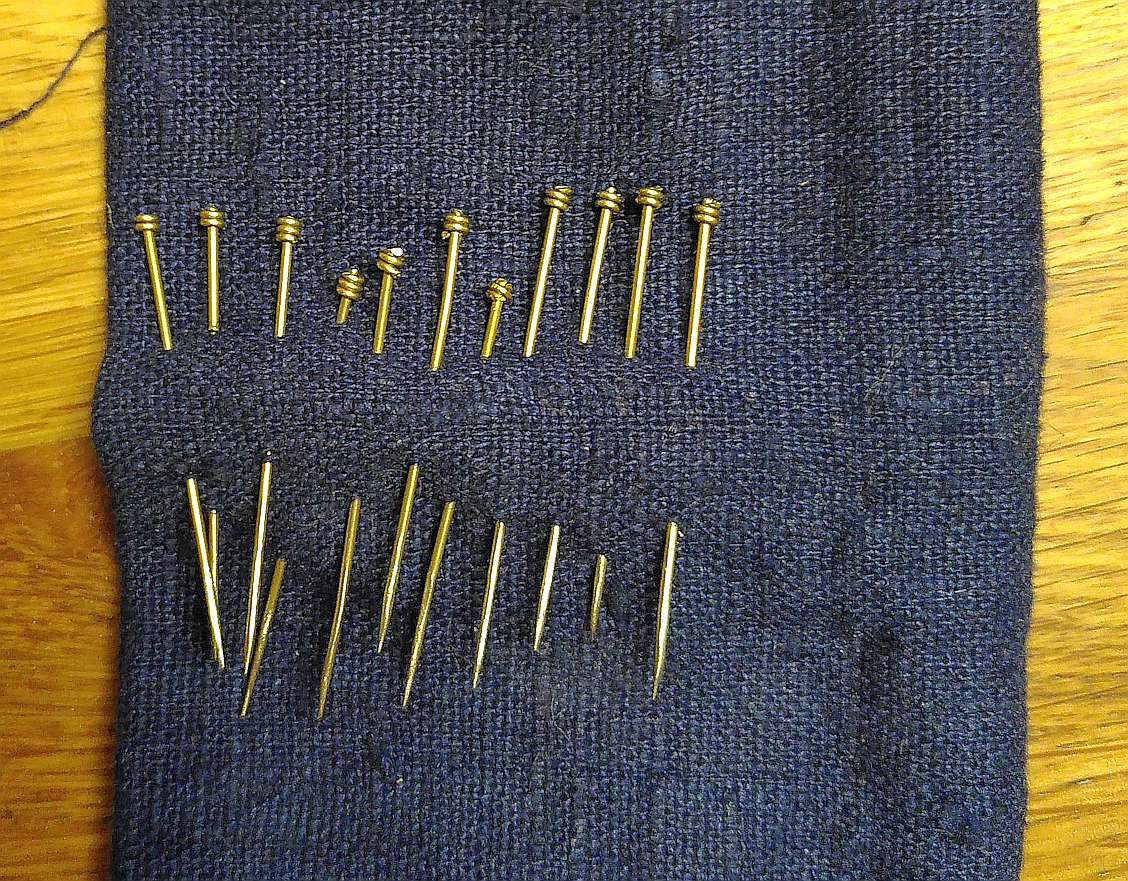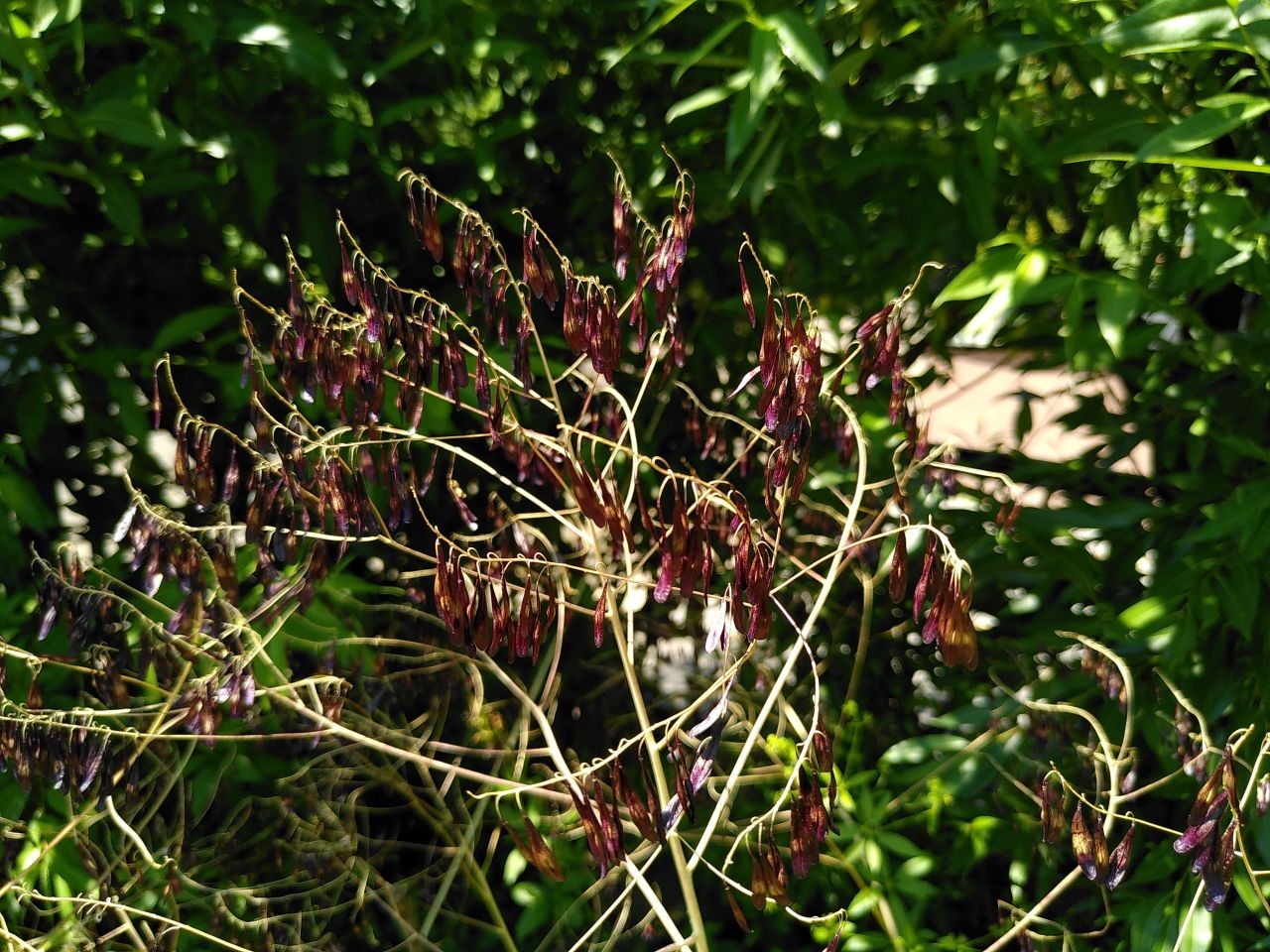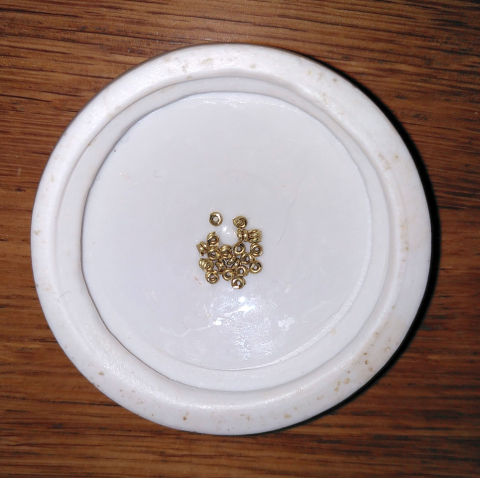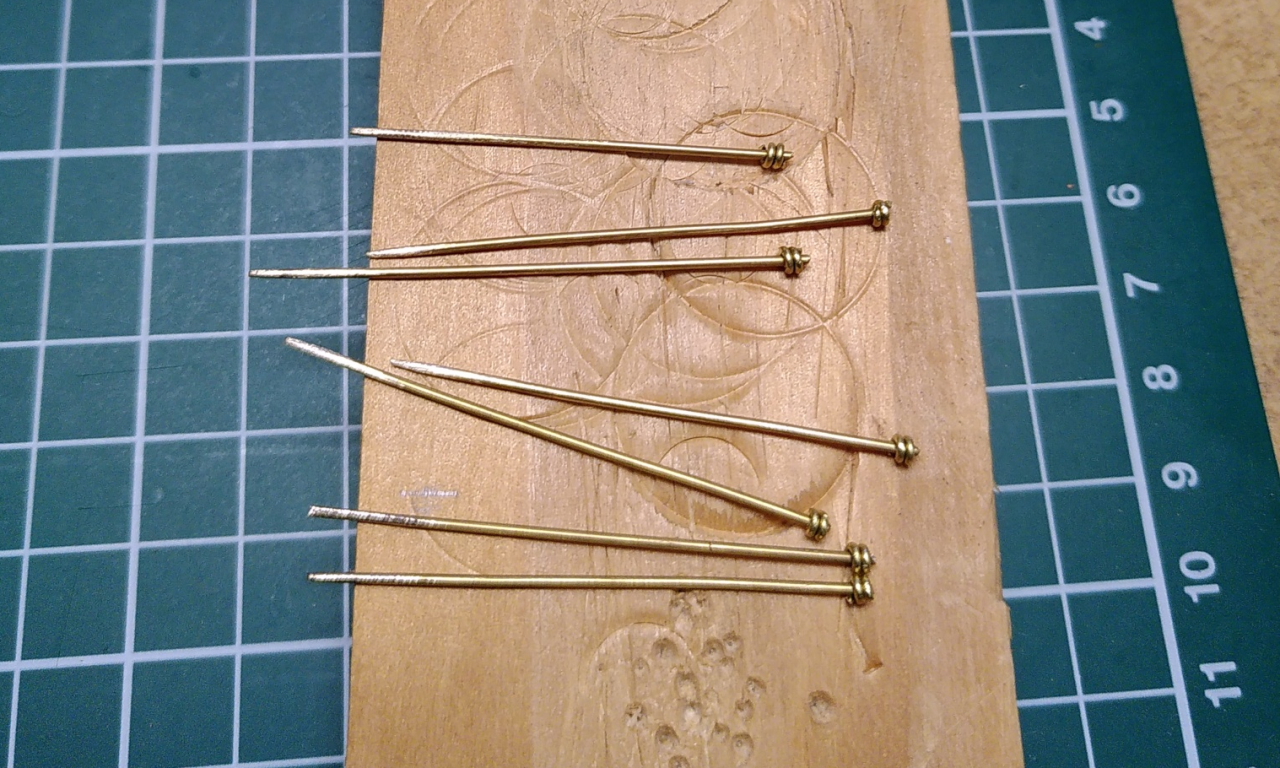I'm very, very happy about two wonderful prototypes... of shears!
Shears were more common than scissors for most of the Middle Ages, at least according to archaeological evidence. They are still in use for some things today, so you can relatively easily get simple shears in either a fairly large or a very small size - for shearing sheep, pruning plants, or snipping threads.
The medium-sized shears, though, they are hard to come by if at all. And if you're going for historically correct shapes of the blade and the overall form, well, here's none of them that will pass scrutiny. So for years, I have searched for someone willing to accept the challenge and make shears for me to sell.
Finally, I found someone. These shears are made just like the originals were: With steel cutting edges, welded onto the iron body, in the shape and size they should be (around 14 cm in length). A nice, rounded bow at the end, and a bit of decorative waves just before the blades start. They are sharp enough and well enough aligned that they will cut fabric nicely and cleanly.
There will be a little bit of fine-tuning to make them softer to press together, as cutting at the moment requires a little more strength than is comfortable for doing more than just short bits, and then they will turn up in the shop at some point. And I am thrilled they will!




